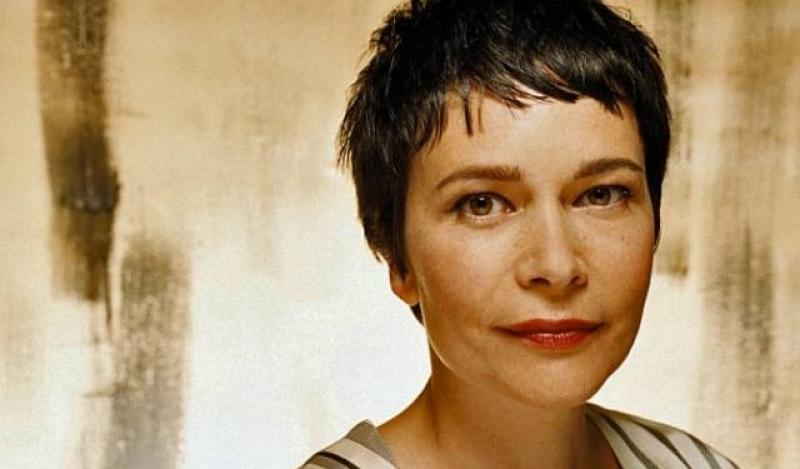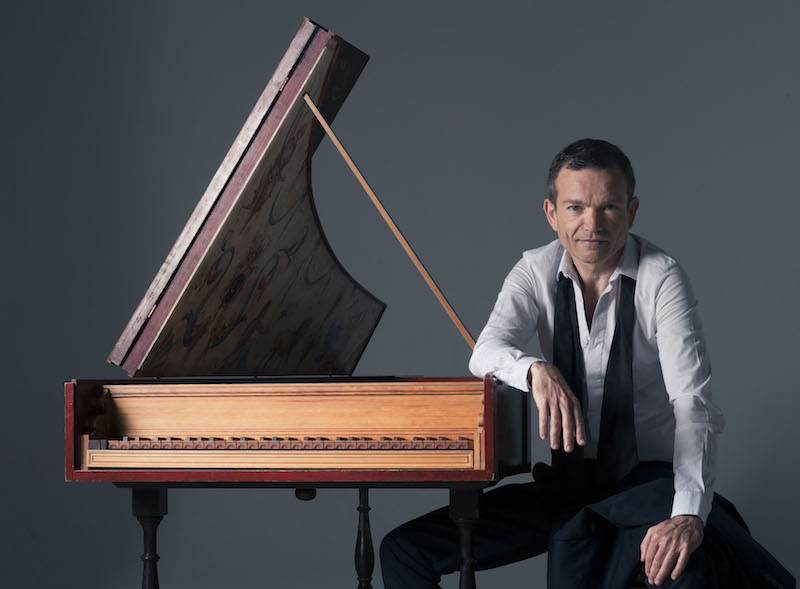Piau, Les Talens Lyriques, Rousset, Wigmore Hall | reviews, news & interviews
Piau, Les Talens Lyriques, Rousset, Wigmore Hall
Piau, Les Talens Lyriques, Rousset, Wigmore Hall
An unexpectedly lacklustre evening from Rousset and his musicians

La Follia was, as every programme note inevitably reminds us, a pop song of its day. A strutting Spanish dance, it featured in the work of over 150 composers, so catchy was its signature chord progression. Still a classic of Baroque concert programmes, it’s a great way to take the temperature of any given performance. At its best, it can have even a sedate audience stamping and swaying, thrilled by those grinding syncopations and that heartbeat pulse.
Perhaps it was the late change of soloist and programme that threw off the energy of this normally superb ensemble? Soprano Sandrine Piau stepped in for an indisposed Ann Hallenberg, necessitating a little reworking of a concert that was originally supposed to include cantatas by Alessandra Scarlatti and Nicola Fago, and ended up instead with those by Domenico Scarlatti and Monteclair. But that doesn’t explain the rather lacklustre instrumental numbers, nor the determinedly matronly tempi, nor a fundamental lack of showmanship from the instrumentalists. Only in the encores did we finally hear these musicians at their best.
 The mood for the evening was set by the choice of Corelli’s Trio Sonata in D minor Op.3 No.5 as the first instrumental piece – a contemplative, understated work in a collection that boasts so many more athletic or emotionally extravagant ones. Slow speeds and an undemonstrative style exposed all the work’s detail, highlighting the conflicting approaches of violinists Gilone Gaubert-Jacques and Jivka Kaltcheva – the one all neat gesture and smooth lines, the other much more percussive and folk-rough at the edges. Cellist Emmanuel Jacques found himself caught somewhere between, but all seemed confined rather than released by Rousset’s precise direction from the harpsichord. (Rousset pictured above.)
The mood for the evening was set by the choice of Corelli’s Trio Sonata in D minor Op.3 No.5 as the first instrumental piece – a contemplative, understated work in a collection that boasts so many more athletic or emotionally extravagant ones. Slow speeds and an undemonstrative style exposed all the work’s detail, highlighting the conflicting approaches of violinists Gilone Gaubert-Jacques and Jivka Kaltcheva – the one all neat gesture and smooth lines, the other much more percussive and folk-rough at the edges. Cellist Emmanuel Jacques found himself caught somewhere between, but all seemed confined rather than released by Rousset’s precise direction from the harpsichord. (Rousset pictured above.)
The cantatas fared better, with Piau finding more unbuttoned, more sensuous moments in a mixture of familiar and unfamiliar repertoire. Monteclair’s compact retelling of the Rape of Lucretia story – Morte di Lucrezia – is a dramatic oddity that demands the singer take the roles of both Tarquinius (whose earthy desires confine him to recitative) and Lucrezia, who expresses herself in the arias. The result is too concise to avoid feeling hectic, but with some exquisite moments such as the duet for two violins, who weave and intertwine just as the myrtles Lucrezia commands to cover her body.
Piau’s expressive delivery helped anchor the sudden mood swings of the Monteclair, while also plotting a subtle emotional arc through Scarlatti’s rather monochrome Tinte a note di sangue. But it was with Handel that everything really came into focus – first with cantata Notte placida e cheta, and then with encores “Piangerò” (Giulio Cesare) and “Tornami a Vagheggiar” (Alcina). Matching the muted strings for husky softness in “Zeffiretti, dehi venite”, Piau then bolstered her tone again for an achingly poignant “Piangerò” – dignified tragedy and pain distilled into a few minutes of pure, transcendent beauty.
Those few moments brought into focus everything that had blurred and stumbled till then – a reminder that a nice evening of pretty Baroque music just isn’t enough.
rating
Explore topics
Share this article
The future of Arts Journalism
You can stop theartsdesk.com closing!
We urgently need financing to survive. Our fundraising drive has thus far raised £49,000 but we need to reach £100,000 or we will be forced to close. Please contribute here: https://gofund.me/c3f6033d
And if you can forward this information to anyone who might assist, we’d be grateful.

Subscribe to theartsdesk.com
Thank you for continuing to read our work on theartsdesk.com. For unlimited access to every article in its entirety, including our archive of more than 15,000 pieces, we're asking for £5 per month or £40 per year. We feel it's a very good deal, and hope you do too.
To take a subscription now simply click here.
And if you're looking for that extra gift for a friend or family member, why not treat them to a theartsdesk.com gift subscription?
more Classical music
 BBC Proms: Le Concert Spirituel, Niquet review - super-sized polyphonic rarities
Monumental works don't quite make for monumental sounds in the Royal Albert Hall
BBC Proms: Le Concert Spirituel, Niquet review - super-sized polyphonic rarities
Monumental works don't quite make for monumental sounds in the Royal Albert Hall
 Frang, Romaniw, Liverman, LSO, Pappano, Edinburgh International Festival 2025 review - sunlight, salt spray, Sea Symphony
Full force of the midday sea in the Usher Hall, thanks to the best captain at the helm
Frang, Romaniw, Liverman, LSO, Pappano, Edinburgh International Festival 2025 review - sunlight, salt spray, Sea Symphony
Full force of the midday sea in the Usher Hall, thanks to the best captain at the helm
 Elschenbroich, Grynyuk / Fibonacci Quartet, Edinburgh International Festival 2025 review - mahogany Brahms and explosive Janáček
String partnerships demonstrate brilliant listening as well as first rate playing
Elschenbroich, Grynyuk / Fibonacci Quartet, Edinburgh International Festival 2025 review - mahogany Brahms and explosive Janáček
String partnerships demonstrate brilliant listening as well as first rate playing
 BBC Proms: Akhmetshina, LPO, Gardner review - liquid luxuries
First-class service on an ocean-going programme
BBC Proms: Akhmetshina, LPO, Gardner review - liquid luxuries
First-class service on an ocean-going programme
 Budapest Festival Orchestra, Iván Fischer, Edinburgh International Festival 2025 review - mania and menuets
The Hungarians bring dance music to Edinburgh, but Fischer’s pastiche falls flat
Budapest Festival Orchestra, Iván Fischer, Edinburgh International Festival 2025 review - mania and menuets
The Hungarians bring dance music to Edinburgh, but Fischer’s pastiche falls flat
 Classical CDs: Hamlet, harps and haiku
Epic romantic symphonies, unaccompanied choral music and a bold string quartet's response to rising sea levels
Classical CDs: Hamlet, harps and haiku
Epic romantic symphonies, unaccompanied choral music and a bold string quartet's response to rising sea levels
 Kolesnikov, Tsoy / Liu, NCPA Orchestra, Chung, Edinburgh International Festival 2025 review - transfigured playing and heavenly desire
Three star pianists work wonders, and an orchestra dazzles, at least on the surface
Kolesnikov, Tsoy / Liu, NCPA Orchestra, Chung, Edinburgh International Festival 2025 review - transfigured playing and heavenly desire
Three star pianists work wonders, and an orchestra dazzles, at least on the surface
 BBC Proms: Láng, Cser, Budapest Festival Orchestra, Iván Fischer review - idiomatic inflections
Bartók’s heart of darkness follows Beethoven’s dancing light
BBC Proms: Láng, Cser, Budapest Festival Orchestra, Iván Fischer review - idiomatic inflections
Bartók’s heart of darkness follows Beethoven’s dancing light
 Weilerstein, NYO2, Payare / Dueñas, Malofeev, Edinburgh International Festival 2025 review - youthful energy and emotional intensity
Big-boned Prokofiev and Shostakovich, cacophonous López, plus intense violin/piano duo
Weilerstein, NYO2, Payare / Dueñas, Malofeev, Edinburgh International Festival 2025 review - youthful energy and emotional intensity
Big-boned Prokofiev and Shostakovich, cacophonous López, plus intense violin/piano duo
 theartsdesk at the Three Choirs Festival - Passion in the Cathedral
Cantatas new and old, slate quarries to Calvary
theartsdesk at the Three Choirs Festival - Passion in the Cathedral
Cantatas new and old, slate quarries to Calvary
 BBC Proms: Estonian Philharmonic Chamber Choir, Kaljuste review - Arvo Pärt 90th birthday tribute
Stillness and contemplation characterise this well sung late-nighter
BBC Proms: Estonian Philharmonic Chamber Choir, Kaljuste review - Arvo Pärt 90th birthday tribute
Stillness and contemplation characterise this well sung late-nighter

Add comment